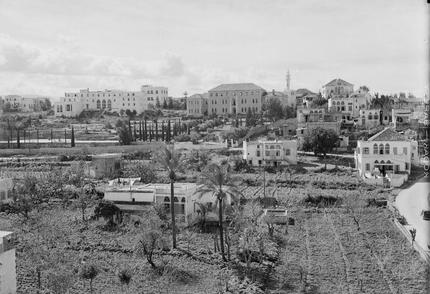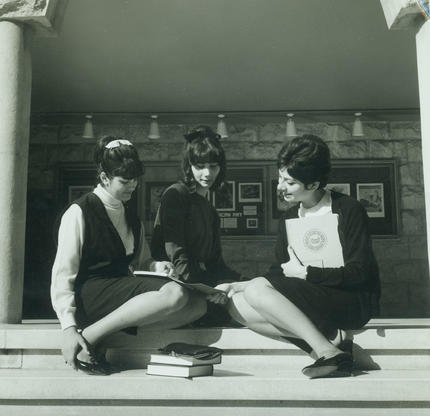Ras Beirut―a treasure trove of nostalgia
LAU’s Center for Lebanese Heritage takes its audience down memory lane through poetry, history and film.
An engaged and delighted full house was treated to nostalgic tales about Ras Beirut during the October edition of the monthly series of talks hosted by LAU’s Center for Lebanese Heritage (CLH).
The first of three speakers introduced by CLH Director, poet and journalist Henri Zoghaib, was former LAU staff member Leila Saleeby Dagher, who graduated from the university in 1960 when it was known as the Beirut College for Women (BCW).“They say LAU is the flower of Ras Beirut, but they are mistaken,” said Dagher, after reciting a beautiful Arabic poem that reminisces about LAU’s history of women’s education and empowerment. “LAU is an orchard of flowers.”
Dagher has held various posts at the university since graduating, including director of relations and admissions, and was for many years on the board of the Alumni Association. “BCW helped Lebanese and Arab girls gain an education, particularly those whose parents would not allow them to study at co-edinstitutions,” said Dagher, while recounting the journeys of women who studied at the Beirut campus in the 1930s, way back when it was called American Junior College for Women (AJCW).
A lyrical tour of the campus incorporated a school by the upper gate where JCW students used to teach and the nursery by Shannon Hall, which was attended by both AJCW and BCW students. “Some of the young girls who attended that nursery grew to be women who graduated from the university,” beamed Dagher, while addressing the scores of people in the audience, most of whom lived in Ras Beirut and included fellow alumni. Front and center were LAU President Joseph G. Jabbra and General Manager of the Ministry for Tourism Nada Sardouk.
General Secretary of the United Front for Ras Beirut, Zakaria el Ghali, followed with an overview of prominent people and places in the area, past and present, such as the Shehab family garden in Wardieh, the carob tree at the Itani farm, and the black man held in chains by the French at what became known as the area of Saqiyet al Janzir.
“Ras Beirut is an environment unto itself, worthy of nationhood,” declared el Ghali. “We refused armed combat during the war and were able to maintain the environment of Ras Beirut as a flower of many colors, an example the whole country must emulate.”
Preceding and succeeding the talks were screenings of clips from a film entitled Memories of Ras Beirut – Wish You Were Here, produced a decade ago by LAU alumnus Mahmoud Hojeij. “I still receive emails from people all over the world telling me about their experiences and memories of Ras Beirut,” said the filmmaker. Meeting the eyes of many in the audience, he remarked: “It’s a beautiful expression I see in the faces of those forty and over who knew Ras Beirut as it was.”
Watch LAU alumnus Mahmoud Hojeij’s film Memories of Ras Beirut – Wish You Were Here
More
Latest Stories
- A Cardiovascular Conference to Streamline National Expertise
- Aspiring Engineers Compete for Scholarships at LAU
- The School of Engineering Delivers Immersive Learning Experiences
- Consultants in the Making
- LAU Marks Rare Disease Day With a Call for Collaboration
- First Pulsed-Field Ablation in Lebanon Takes Place at the LAU Medical Center
- LAU New York Becomes a Degree-Granting Campus
- Health Science Students Win at the Annual Colorectal Awareness Walkathon



